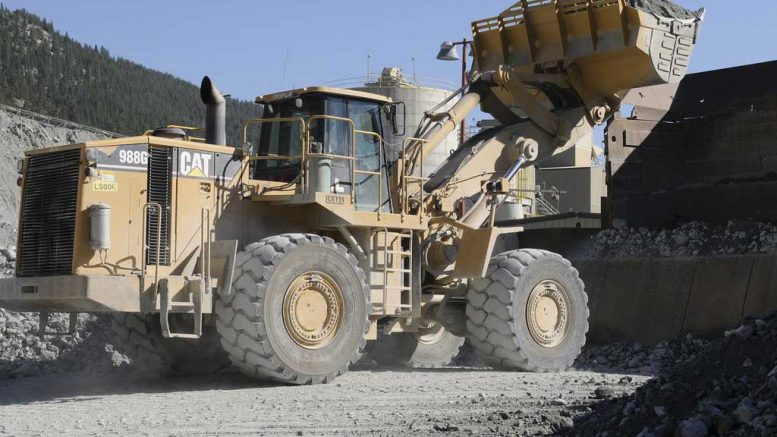VANCOUVER — South Africa’s Sibanye-Stillwater (NYSE: SBGL) has launched a US$383-million, all-share bid for debt-heavy peer Lonmin (LON: LMI; US-OTC: LNMIY). If the deal closes, it would be Sibanye’s fourth major acquisition over the past 24 months, and would bring Sibanye’s external acquisition tally to over US$3 billion since early 2015.
The companies expect to realize cost savings at contiguous assets and processing facilities to create a “mine-to-market South African platinum group metals (PGM) business.”
Lonmin shareholders would receive 0.967 Sibanye share for each Lonmin share, which equates to a 41% premium to the 30-day, volume-weighted average pricing.
Lonmin’s main assets are the Marikana complex in Rustenburg and the adjoining Pandora joint venture on the southwestern limb of South Africa’s Bushveld complex. Lonmin also operates smelting and metal refining facilities in the country.
Sibanye has been focused on gold operations throughout the Witwatersrand basin, as well as PGM production from the Bushveld.

Lonmin’s flagship production asset is the Marikana complex in Rustenburg and the adjoining Pandora joint venture on the southwestern limb of South Africa’s Bushveld complex. Credit: Lonmin PLC.
The company was spun out of Gold Fields (NYSE: GFI) in mid-2013. It then added PGM production via a US$294-million deal for Aquarius Platinum and a US$330-million purchase of Anglo American’s (LON: AAL) South African platinum mines near Rustenburg.
Sibanye’s largest acquisition came last year with a U$2.2-billion deal for U.S.-based PGM producer, Stillwater Mining.
“This was a really logical consolidation step in our PGM strategy, and I think most people saw it coming for a long time,” Sibanye CEO Froneman said during a conference call.
“I’m going to share something with you that isn’t anywhere in the presentation. This is probably the transaction I’ve worked on the longest in my career. We signed our first mandate and exchanged letters in early 2014, and the first discussions we had go back even further than that.”

Sibanye’s underground Stillwater PGM mine near Nye, Montana, in the United States. Credit: Sibanye-Stillwater.
Sibanye is set to become the world’s second-largest PGM miner, with pro forma annual output of 2.8 million oz. per year. It already ranks among the world’s top-10 gold producer.
Lonmin has struggled with falling PGM prices, alongside much of South Africa’s precious metals industry, since late 2009. The platinum price has dropped nearly 50% over that time period en route to US$892 per oz. at press time.
The company has battled liquidity concerns around its debt covenants, struggled with social license issues, and lacked capital to reinvest in extending its reserves and resources.

Sibanye’s Kloof gold mine lies 60 km south-west of Johannesburg in Gauteng province, South Africa. Credit: Sibanye-Stillwater.
Furthermore, Lonmin recently reported it did not expect to publish its annual financial results on schedule due to “ongoing discussion with its lender group” regarding a strategic review and potential “asset divestment process.”
“We’ve dealt with our limitations and restrictions, which have mostly surrounded liquidity,” Lonmin CEO Ben Magara said. “Due to our capital restraints we could not reinvest in our assets, and that was becoming a pressing concern for our business and our employees. This combination allows us to become a leading mine-to-market company with good geographic diversity.”

Sibanye director and CEO Neal Froneman.
The deal could face political hurdles in South Africa, with Sibanye disclosing it would likely move ahead with 12,600 job cuts across Lonmin operations. Marikana was plagued by police violence and labour unrest during a mid-2012 strike.
The transaction will also require agreements from Lonmin’s largest shareholder, the South African state-owned Public Investment Corp., which holds a 30% stake. Magara said conversations will continue with local unions and the PIC, but offered no further insights.
Meanwhile, Sibanye estimates it has delivered US$41 million in cost savings from the Aquarius Platinum and Rustenburg acquisitions to date, and it estimates another US$75 million next year. The company expects the Lonmin transaction will translate into US$110 million in pre-tax cost savings by 2021.
Froneman said Sibanye wants to grow its gold business, and hinted at more opportunities in North America.
“We need to address our South African discount, and that’s so we can use our equity properly,” Froneman added. “We can apply our equity in South Africa, where we do trade at premiums in some areas. That’s why we can structure the Lonmin transaction this way. Unfortunately, I’m sad to say we still cannot use our equity offshore. We want to compete on the international playing field, and need to clear the discount hurdle to do that.”
BMO Capital Markets analyst Andrew Breichmanas commented the deal has “long been viewed as the logical next step of the company’s consolidation strategy,” and said Sibanye “expects to realize significant synergies and adopt a more pragmatic approach towards capital allocation and retrenchments.”
Sibanye has a primary listing on the Johannesburg Stock Exchange, where it trades under the ticker “SGL.” It has a secondary listing of American Depositary Receipts on the New York Stock Exchange, which have traded within a 52-week range of US$4.39 to US$10.80, and closed at US$4.78 per share at press time.


Be the first to comment on "Sibanye tables US$383M bid for Lonmin"